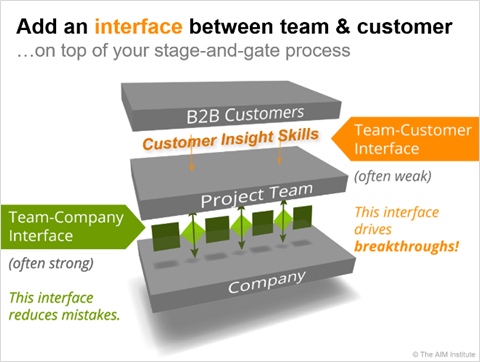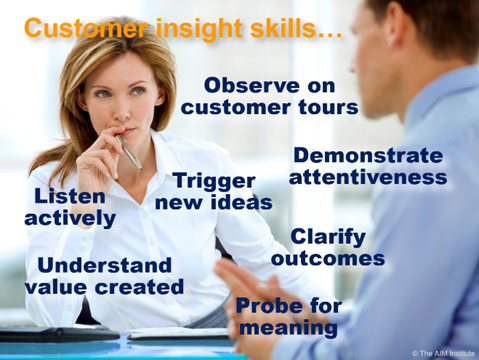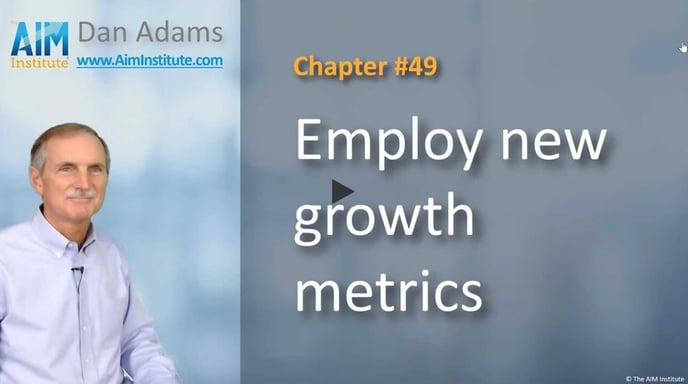- BLUE HELP
- Blueprinting Center & Methodology
- How does Blueprinting fit with a stage-and-gate process?
-
Blueprinting Center & Methodology
- What is New Product Blueprinting?
- How is Blueprinting learned and applied?
- Blueprinting Center
- Blueprinting E-Learning Course
- How can I become Certified in New Product Blueprinting?
- How does Blueprinting fit with a stage-and-gate process?
- How does Blueprinting fit with strategic planning?
- How does Blueprinting fit with Design Thinking?
- How does Blueprinting fit with Lean Startup?
- How does Blueprinting fit with Minesweeper de-risking?
- How does Blueprinting fit with LaunchStar product launch?
- What innovation metrics should we use?
- What is "Jobs-to-be-Done?"
-
Blueprinter® Software
-
Market Segmentation (Step 1)
-
Discovery Interviews (Step 2)
- How to plan Discovery interviews
- Preparing your interview team
- Convincing customers to be interviewed
- How to handle confidential info in an interview
- How to conduct a Discovery interview
- Finding & using a digital projector for interviews
- How to conduct a customer tour
- How to debrief & follow-up a Discovery interview
- Engaging your sales colleagues in interviews
- Engaging distributors in interviews
- Interviewing customers down the value chain
- How to interview remotely with web-conferences
- How to interview at trade shows & other venues
- Interviewing in different global cultures & languages
- How to listen well during customer interviews
- How to probe during customer interviews
- How to gather economic data during interviews
- How to create & use Current State questions
- How to identify Must Haves (MH)
- How to select Top Picks (TP)
- How to use Trigger Maps
- How to form Outcome Statements
-
Preference Interviews (Step 3)
-
Rest of Blueprinting (Steps 4-7)
-
Everyday VOC
-
Minesweeper® De-risking
2. Blueprinting… another “interface” over stage-gate
Keep your stage-gate process... but complement it with Blueprinting.
A stage-and-gate process—the interface between your company and a new-product project team—is necessary, but it’s not sufficient. You must build another interface on top of this foundation… a strong interface between the new-product team and those you hope will buy the new product—customers.

This is where New Product Blueprinting helps. It’s a bundle of skills, methods and tools designed to help your teams understand market needs far better than competitors. These two interfaces complement each other well: Your stage-gate process guides the company in what questions to ask at gate reviews… while Blueprinting helps teams find the answers. Your stage-gate process helps you reduce mistakes… while Blueprinting drives breakthroughs.
So what skills will New Product Blueprinting training provide teams? It will help them…
- Listen actively
- Demonstrate they are listening
- Probe for deeper meaning
- Understand the value that could be created
- Trigger new ideas
- Clarify the outcomes customers want
- Make keen observations during customers tours

These skills don’t happen by themselves. Leaders need to make them a priority, and teams need to practice them on real projects in real customer interviews under skilled coaching support.
Do this and your gate reviews will be far more rewarding. Instead of discussing what the team forgot on a checklist, you’ll discuss what they discovered in a customer interview. That’s what leads to breakthroughs!
For more, watch the 2-minute video, Invigorate your stage-and-gate process, part of the B2B Organic Growth video series by Dan Adams.
Keywords: stage-gate, New Product Blueprinting, team-company interface, team-customer interface, customer insight skills

